In recent years, there has been a growing interest in eco-friendly landscaping practices as more people realize the environmental impact of traditional lawns...as they should! Conventional lawns often require significant amounts of water, fertilizers, and pesticides, contributing to issues like water waste and pollution. We'll make note of several popular lawn alternatives that are not only better for the environment but also lower maintenance and more cost-effective in the long run.
Why Choose Clover Lawns? The All-Around Winner for Your Yard
Clover lawns are gaining in popularity and for good reason. They offer a bunch of upsides, from being eco-friendly to looking pretty darn good all year round. Here's why you might want to jump on the clover bandwagon for your lawn.
The Environmental and Practical Perks Rolled into One
Clover is a legume, which is nature's way of saying it's a multitasker. It pulls nitrogen right from the air and fixes it into the soil, making it fertile. Forget about those expensive, polluting synthetic fertilizers—clover has you covered. It’s like having a built-in, eco-friendly fertilizing system. Plus, this green marvel is drought-tolerant, meaning it needs less water than your regular lawn, which is both good for the planet and your water bill.
When you mow your clover lawn, you're doing more than just yard work. The leftover clippings act like a slow-release, natural fertilizer, helping not just the clover, but other plants in your yard to thrive. It's like your lawn is taking care of itself—and its neighbors too.
Beauty and Low Maintenance: The Best of Both Worlds
Clover’s not just practical; it's got looks to boot. It stays lush and green all year, with adorable flowers that add a little pop of color. And unlike that high-maintenance grass lawn you might be used to, clover is easy-going. It needs less mowing and watering, and it's tough enough to resist most pests and diseases, cutting down on the need for chemical warfare in your yard.
Building Better Soil and Buzzing with Life
You'll be doing more than just your lawn a favor when you go with clover. Its deep roots break up compact soil, making for better water drainage and a healthier growing environment for other plants.
And let's not forget our buzzing friends—the bees. Clover attracts them and other pollinators, so you're doing your bit for biodiversity and the ecosystem just by having it around.
Moss: The Cozy, Low-Maintenance Lawn You Didn’t Know You Needed
If your yard is more shadow than sunlight, moss might just be the alternative lawn you've been searching for. It's chill, environmentally friendly, and looks like a verdant carpet. What's not to love?The Shady, Low-Maintenance Wonder
Got a yard that’s more shade than sun? Moss is your new best friend. While grass throws a fit in low-light conditions, moss is unfazed. It thrives under trees and beside buildings, giving you a green oasis where most lawns would throw in the towel. And the best part? Moss is super low-maintenance. No mowing, no fertilizers, and no noisy lawn equipment. You're saving both time and the environment in one go.
Water-Smart and Gorgeous
Moss is like the sponge of the plant world. It loves damp spots and does a stellar job at holding onto water. In places where water is scarce or there are restrictions, moss is a guilt-free alternative. Plus, it's pretty to look at. Imagine a lush, green carpet that adds tranquility and a unique look to your outdoor space.
Functional and Eco-Friendly
Moss is more than just eye-candy. Its dense mat-like structure gives it secret superpowers, like controlling soil erosion on slopes. But before you go all-in on a mossy wonderland, a couple of things to consider. Moss can get slippery when wet, so maybe add some stepping stones or a pathway. And while it's okay with light foot traffic, it's not built for a game of backyard football. Keep it in the low-traffic zones or mix it with other ground covers that can take the heat.
Ornamental Grasses: The Lawn Alternative That'll Turn Heads
Ever walk down a street lined with ornamental grasses and find yourself oddly captivated? You're not alone. Ornamental grasses bring a unique combination of visual flair, low-maintenance care, and ecological benefits that make them a fantastic alternative to the traditional lawn.A Lawn that's Eye-Candy
Ornamental grasses come in a smorgasbord of sizes, shapes, and colors. They can be the show-stoppers or the supporting actors in your garden, providing a dynamic backdrop for other plants. From Pampas Grass that dances in the wind to the fine blue-green foliage of Festuca, these grasses are the extroverts of the plant world.
Easy Living and Wildlife Friendly
Low on care but high on impact—that's the mantra of ornamental grasses. Many are drought-tolerant, which is great for both you and the planet. No more frequent mowing or watering marathons. Plus, they’re a haven for birds, insects, and small critters, offering both food and shelter. They're the gift that keeps on giving.
Not Just a Pretty Face
Their beauty isn't just skin-deep. Ornamental grasses come equipped with deep root systems that act like soil anchors, making them great for slopes or areas prone to erosion. If your yard has some challenging spots, these grasses can be the practical, eco-friendly solution you've been looking for.
Trendy Picks to Consider
Carex (Sedge): A versatile chameleon that thrives in varying conditions and gives you a palette of colors and textures to play with.
Festuca (Fescue): If you're after striking color contrast, this blue-green beauty is a drought-tolerant charmer that loves the sun.
Muhlenbergia (Muhly Grass): Known for its cloud-like blooms, this one’s a stunner that's both drought-tolerant and adaptable to various light conditions.
Creeping Thyme: The Low-Care, High-Reward Groundcover
If you're yearning for a lawn alternative that brings vibrant color, minimal upkeep, and a touch of fragrance, creeping thyme ticks all those boxes and more.
An Easy, Eco-Friendly Lawn Alternative
Once it's in the ground, creeping thyme is a champ at taking care of itself. It thrives even when water is scarce, making it a great pick for drought-prone areas. And forget about weeds—the dense thyme mat gives them no room to grow.
Not Just Green—It’s Colorful and Aromatic!
Tired of the same old green carpet? Creeping thyme spices things up with its small, colorful flowers that come in shades like pink and purple. The bonus? Its leaves give off a delightful scent, adding an aromatic dimension to your yard.
Where Function Meets Flexibility
Sure, it might not be the go-to for a soccer field, but for light foot traffic areas or decorative patches, it’s a hit. Plus, its versatility makes it a gardener's dream. You can plant it in rock gardens, alongside borders, or even between stepping stones.
A Pollinator's Paradise
This groundcover is more than just eye-candy for humans—it's also a hot spot for pollinators. Its colorful flowers attract bees and butterflies, helping boost your local ecosystem's health.
Dichondra: A Graceful Green Carpet for Your Yard
Ever heard of Dichondra? Also known as "silver falls," this unique groundcover offers a lush, green alternative to traditional lawns, without demanding much in return. Let's dive into why it might be the perfect pick for your yard.
Low-Upkeep and Adaptable
Much like other popular groundcovers, Dichondra is a breeze to maintain. Once it's settled, it pretty much takes care of itself, being drought-tolerant and happy in various soils.
More Than Just Green—It's Stylish!
What sets Dichondra apart are its charming, small circular leaves. Imagine a flowing, vibrant green carpet that even fashion-conscious plants would envy.
A Practical Choice for Foot Traffic
While not exactly built for a football scrimmage, Dichondra handles light foot traffic like a champ. It's a great pick for garden paths or areas where you might sit back and enjoy the scenery.
Heat-Lover and Versatile Performer
Do you live somewhere with sizzling summers? Good news—Dichondra loves the heat, thriving best in USDA zones 7-11. Plus, its adaptability means it fits right in whether you're filling gaps between pavers or replacing an entire lawn.
Sedum: The Groundcover That Checks All Boxes
Say hello to Sedum, or Stonecrop if you prefer its fancier name. This groundcover alternative to grass is like that multi-talented friend who's good at everything but never brags about it. Here's what makes it a great fit for your yard.Easy-Going and Earth-Friendly
If plants could chill, Sedum would be the first to kick back. Seriously, this is a low-maintenance superstar that's drought-tolerant and soil-flexible. Plus, it's good for the planet—helping to reduce soil erosion and cut down on water usage.
A Feast for the Eyes (and Bees!)
Beyond being green and serene, Sedum offers a smorgasbord of leaf shapes and colors. And come late summer or fall, it bursts into bloom, throwing a backyard party for pollinators like bees and butterflies.
Walkable, But Within Reason
Planning to tread lightly? Many Sedum varieties can handle moderate foot traffic. So go ahead, stroll through your Sedum carpet, just don’t go hosting any dance-offs on it.
Adaptable and Versatile
Whether you're filling in gaps between pavers or eyeing a full-lawn makeover, Sedum fits the bill. It's like the Swiss army knife of groundcovers.
Lippia: A Comprehensive Lawn Alternative
Low Upkeep, High Reward
Lippia, known scientifically as Phyla nodiflora, and colloquially as Turkey tangle fogfruit, provides a hassle-free and robust alternative to traditional lawns. Requiring minimal maintenance once established, it's an ideal choice for those who prefer a low-effort yet vibrant yard.Dense Coverage & Traffic Resilience
Known for its weed-crowding density, Lippia offers a lush, green surface that maintains its vibrancy year-round. It's not only beautiful but also tough, able to withstand light foot traffic which makes it a practical solution for various outdoor settings.
Pollinator-Friendly Beauty
Adding to its list of merits, Lippia blooms with small, white or pink flowers that are not only visually appealing but also serve as a hub for local pollinators. This adds an ecological advantage to its already impressive portfolio of benefits.
Versatility for Various Spaces
Whether you're looking to fill spaces between pavers, create a quiet sitting area, or replace an entire lawn, Lippia's adaptability makes it suitable for a wide range of outdoor applications.
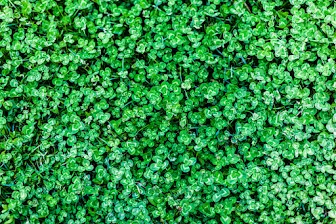
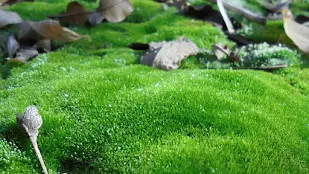
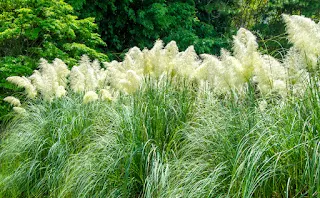
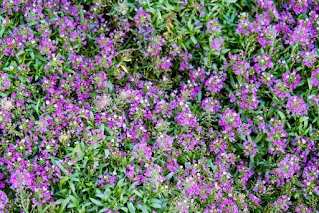
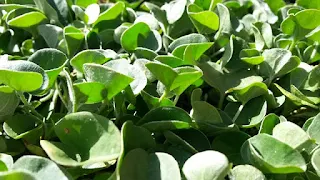

No comments:
Post a Comment